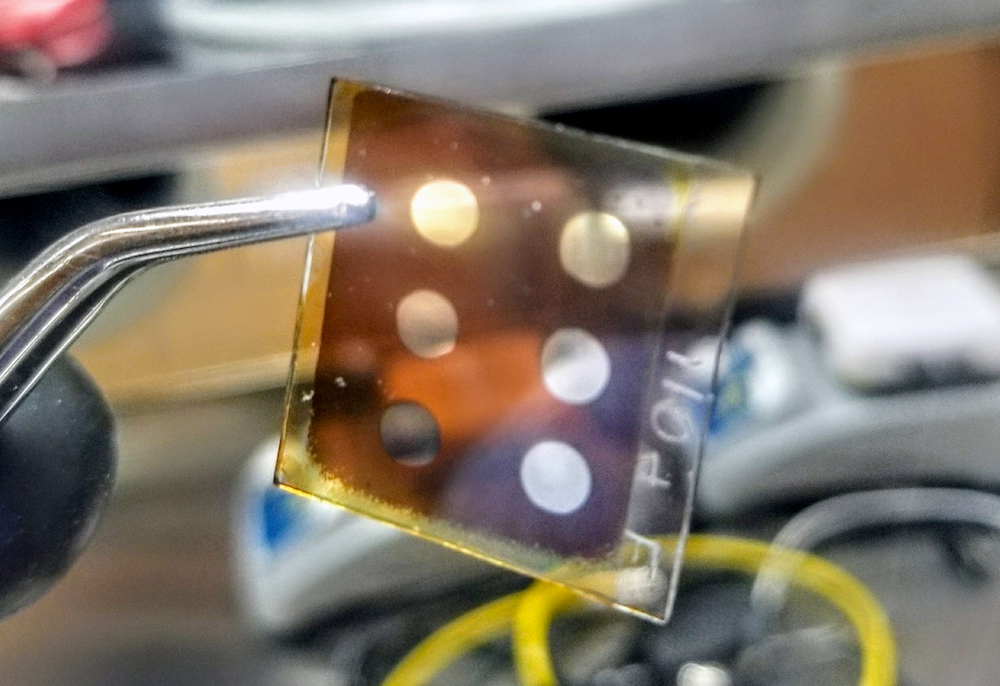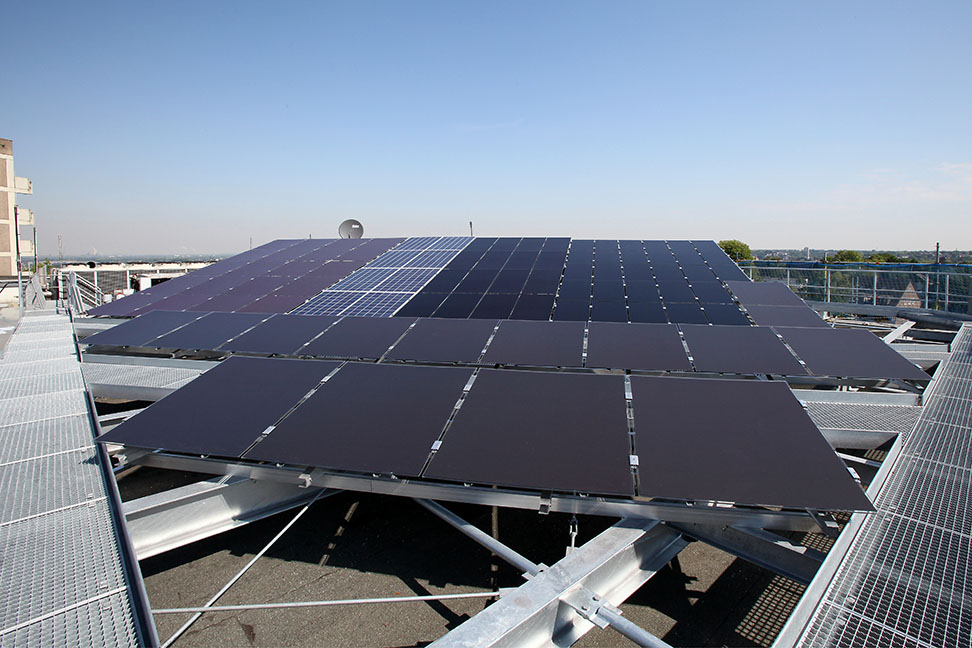: In an LED, electroluminescence creates light through charge carriers that cause the semiconductor to emit photons. This emission can require more energy than is present in the semiconductor, and this excess energy comes from heat around the semiconductor. This makes a semiconductor into a cooling device. In this study, researchers proposed a way to improve the performance of this electroluminescent cooling by using multilayer semiconductors.
Tag: Photovoltaics
Potential of floating, parking, and agri photovoltaics in Germany
Abstract The innovative use of photovoltaics (PV) on parking lots, water bodies, or agricultural areas reduces land use conflicts by co-using land with renewable PV production. In contrast to conventional open-field PV, their potential role in future energy systems has…
Study unlocks nanoscale secrets for designing next-generation solar cells
The work will help researchers tune surface properties of perovskites, a promising alternative and supplement to silicon, for more efficient photovoltaics.
Photo battery achieves competitive voltage
Networked intelligent devices and sensors can improve the energy efficiency of consumer products and buildings by monitoring their consumption in real time. Miniature devices like these being developed under the concept of the Internet of Things require energy sources that are as compact as possible in order to function autonomously.
How robots can help find the solar energy of the future
Solar energy is one of the most promising ways to power the world of the future. However, creating more efficient solar cells requires finding new and better materials.
Solar farms in space are possible, say Surrey and Swansea
It’s viable to produce low-cost, lightweight solar panels that can generate energy in space, according to new research.
Perovskite solar cells’ instability must be addressed for global adoption, say Surrey researchers
Mass adoption of perovskite solar cells will never be commercially viable unless the technology overcomes several key challenges, according to researchers from the University of Surrey.
Physicists solve durability issue in next-generation solar cells
Physicists in the U.S. jumped a major hurdle standing in the way of the commercialization of solar cells created with halide perovskites as a lower-cost, higher-efficiency replacement for silicon when generating electricity from the sun.
Research Reveals Thermal Instability of Solar Cells but Offers a Bright Path Forward
A new type of solar technology has seemed promising in recent years. Halide perovskite solar cells are both high performing and low cost for producing electrical energy – two necessary ingredients for any successful solar technology of the future. But new solar cell materials should also match the stability of silicon-based solar cells, which boast more than 25 years of reliability.
Simple semiconductor solutions could boost solar energy generation and enable better space probes
A ‘simple’ tweak to perovskite solar cells during the fabrication stage could help to unlock the untold potential of the renewable energy source, claims research from the University of Surrey.
Indoor Lighting Creates Power for Rechargeable Devices, Sensors
As more devices require recharging their batteries, researchers are looking to ambient lighting as a potential source of generating small amounts of power for indoor devices. The researchers used one lighting source, a white LED akin to normal brightness for indoor lights, to test three different modules — a gallium indium phosphide semiconductor, a gallium arsenide semiconductor, and a silicon semiconductor. The light source peaked in intensity on the shorter wavelengths of light.

Engineers demonstrate next-generation solar cells can take the heat, maintain efficiency
Iowa State engineers have developed a next-generation solar cell that takes advantage of the promising elctro-optical properties of perovskite materials.
Households in Switzerland could feasibly be energy self-sufficient by 2050
First-of-its-kind study systematically investigates the technical and economic feasibility of photovoltaics-powered energy self-sufficient households in a temperate climate

Tests Measure Solar Panel Performance Beyond Established Standards
In testing solar panels, the sun’s intensity, the spectral composition and the angle of light are important factors in understanding why certain panels are successful and others degrade more quickly. To address the knowledge gap in degradation mechanisms for various photovoltaic types, researchers performed tests over five years in which they collected weather data and panel performance information. The results are published in the Journal of Renewable and Sustainable Energy.